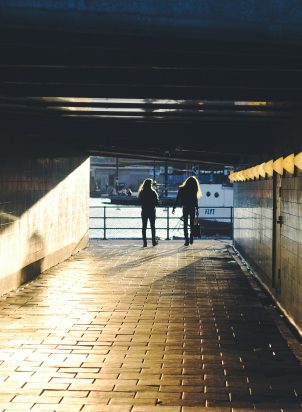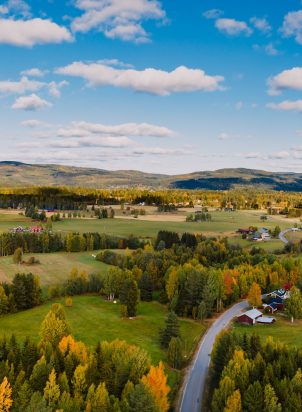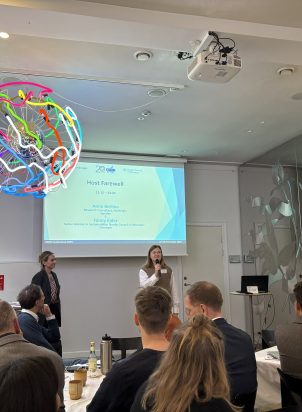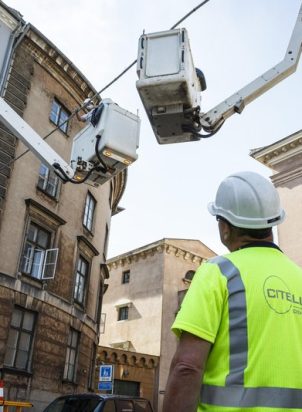Clothing consumption in the Nordic and Baltic countries has significantly increased over the past two decades. This trend escalates environmental and social issues globally: textile production alone is responsible for 1.2 billion tons of CO2e annually – 10% of humanity’s total emissions. Textile recycling systems fail to manage the volume being discarded. There is a need to address these issues through new behaviours, active engagement and platforms for sustainable practices – and young people have an important role in this as tomorrow’s leaders.
Over the weekend, 250 youth representatives from Nordic and Baltic countries met in Vilnius for two days of policy discussion and networking at the first-ever Nordic-Baltic Youth Summit. The summit addressed key issues impacting the region’s youth, resulting in policy recommendations across five vital areas: peace, well-being, governance, democracy, and climate.
Slow fashion initiatives were high on the agenda as Nordregio facilitated hands-on workshops with Icelandic textile artist Ýrúrarí, who teaches mending methods for giving new life to old clothes. The goal was to inspire mindful consumption and discussion while learning useful skills in garment upcycling – demonstrating sustainable living as a practical concept, all within the scope of the Youth for Sustainable Living project.

A new generation of climate leaders
The Nordic-Baltic Youth Summit kicked off at Vilnius Town Hall on Friday and “marked the beginning of a great tradition” as the President of Lithuania, Gitanas Nausėda, stated in his opening speech. The President stressed the importance of youth participation during past, current and future crises, and pointed to the value of regional partnerships:
“Nordic-Baltic cooperation has been a prime example of like-minded countries coming together. My hope is that this summit will advance this deeper on a youth level”.
Secretary General Karen Ellemann of the Nordic Council of Ministers took a similar approach, emphasising the importance of “ensuring that children’s rights and youth perspectives are integrated into our policies and practices.” This message underlined the summit’s purpose and call for youth representation in political processes – a point also raised in conversation with summit participants.
April Yr Kro from the Youth Council of Akureyri contributed to the policy discussions on climate and took part in the Slow Fashion in Action workshop by Nordregio. She thinks that “young people should be entitled to their own future”, stating that:
“We know what we want, we know what’s good for us. We know how the generations are changing fast, so we need to prepare for the new world faster”.

Marija Kiselcuka, a representative from Time for Youth who also attended the climate and fashion workshops, thinks that young people often have a broader perspective than politicians. She believes that politicians tend to focus narrowly on the economy and driving growth, while “youth think about the world and how to make it better for the kids and other groups.”
Studies have shown that young people are more committed to sustainable development and worry more about climate change than adults.[1] A global survey of 10,000 young people aged 16-25 showed that a majority were extremely (59%) or at least moderately (84%) concerned about climate change.[2] In terms of their views on governments’ taking responsibility for the issue, respondents reported a greater feeling of betrayal than of reassurance.
To Marija, the main benefit of a Nordic-Baltic summit is for young people to connect, share and learn across the region:
“This offers new ways to speak in our communities, so we can say: this is happening in Iceland [for example] and here is what they do about it.”


A hands-on approach to sustainable fashion
In addition to learning new upcycling skills, participants at the Slow Fashion in Action workshop gained insights from a Nordic mapping of textile impact, consumption and initiatives in the region. An analysis by the Nordic Council of Ministers showed that the yearly consumption of new clothing and household textiles per capita ranged from 13.5 kg to 16 kg.[3] This translates to between 26 and 48 garments per capita and year – way above the global average.[4] Meanwhile, low-priced garments are said to be discarded after only seven or eight wears.[5]
Workshop host Ýrúrarí thinks that sustainability concerns everyone. As a textile artist, she started felting wool and came up with the idea of renewing old clothes by giving them human-like features, “so you have to look them in the eyes when you throw them away”.
“Mending and upcycling helps you make things last longer and consume less. I love this technique because it is so simple, yet you have so much creative power”.
The topic of slow fashion didn’t stop with the mending workshop on Friday. It also sparked discussion in the climate policy workgroups, which took place on both summit days. The climate group discussed industry challenges and solutions at local, national, and international levels—from taxation and legislation against the use of toxic chemicals, to implementing practical learning in schools—and formulated clear policy actions for the Nordic Council of Ministers.
Gustavs Läcis Kalnins, member of the National Latvian Youth Council, told Nordregio that he would like to see higher taxes on fossil fuels in general but thinks that taxing plastic fabrics is one important step forward. As a textile and design student, his own clothes are made in one semester, a timespan of about four to five months:
“That’s slow fashion to me
.You go by the fabric; you slowly make the pattern and then you sew it. It takes time. It can’t be like the big corporations who change their listings every week.”

A testament to the community
In her speech at the kick-off, Nordic Council of Minister Secretary General Karen Ellemann spoke to the benefits of exchanging ideas and experiences within the Nordic-Baltic context:
“I have seen how valuable a good network can be – and how people you meet now can become important collaborators in the future.”
This point was proven during the two days in Vilnius.
Beyond the summit activities, Nordregio facilitated a collaboration between Nordic and Baltic community members who helped organise a side event to the Summit on Saturday, including a second mending workshop open to the young locals of Vilnius.
Together, community centre Miesto Laboratorija, non-profit organisation Fashion Revolution Lithuania, Nordregio and Ýrúrarí welcomed hundreds of locals to a combined clothes swap and upcycling workshop – in the name of Reuse, Reduce and Recyclemake.


The conversation continues at the Sustainable Living Summit in Stockholm and online 15 October, with the afternoon zooming in on youth empowerment and teaching sustainability in school. Youth representatives will join a panel to discuss consumption and lifestyle influences. What impacts young people’s choices? How can youth lead the change? Sign up for the live stream to gain research findings and key insights from the Nordics.
[1] Hickman et al. (2021) referenced in Sand (2024) Climate, youth and gender: Inclusion strategies for Nordic youth movements.
[2] Hickman et al. (2021) referenced in Sand (2024) Climate, youth and gender: Inclusion strategies for Nordic youth movements.
[3] Palm et al. (2014) Towards a Nordic textile strategy: Collection, sorting, reuse and recycling of textiles.
[4] Munk-Andersen (2021) Kampen mod tøjspild er i gang.
[5] McKin Europeans discard about 11 kilos of textiles every year and, despite the development of recycling technologies, less than 1% of clothes are recycled into new clothes globally.






